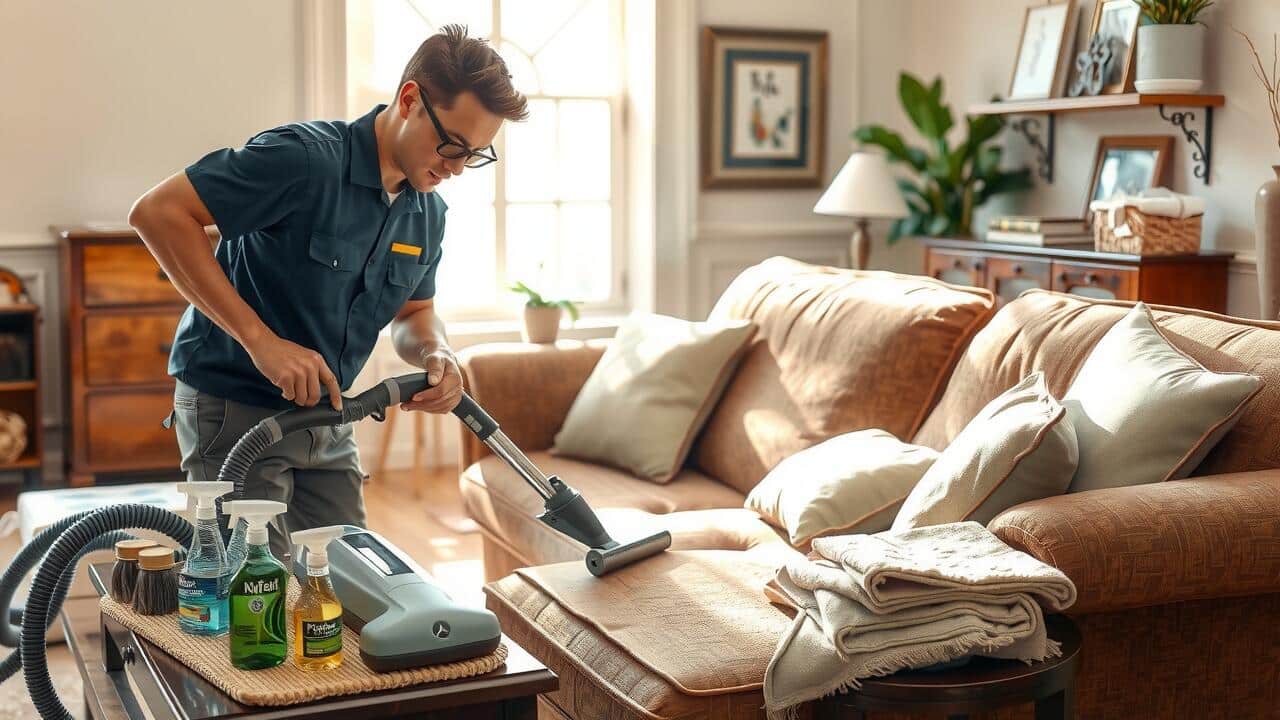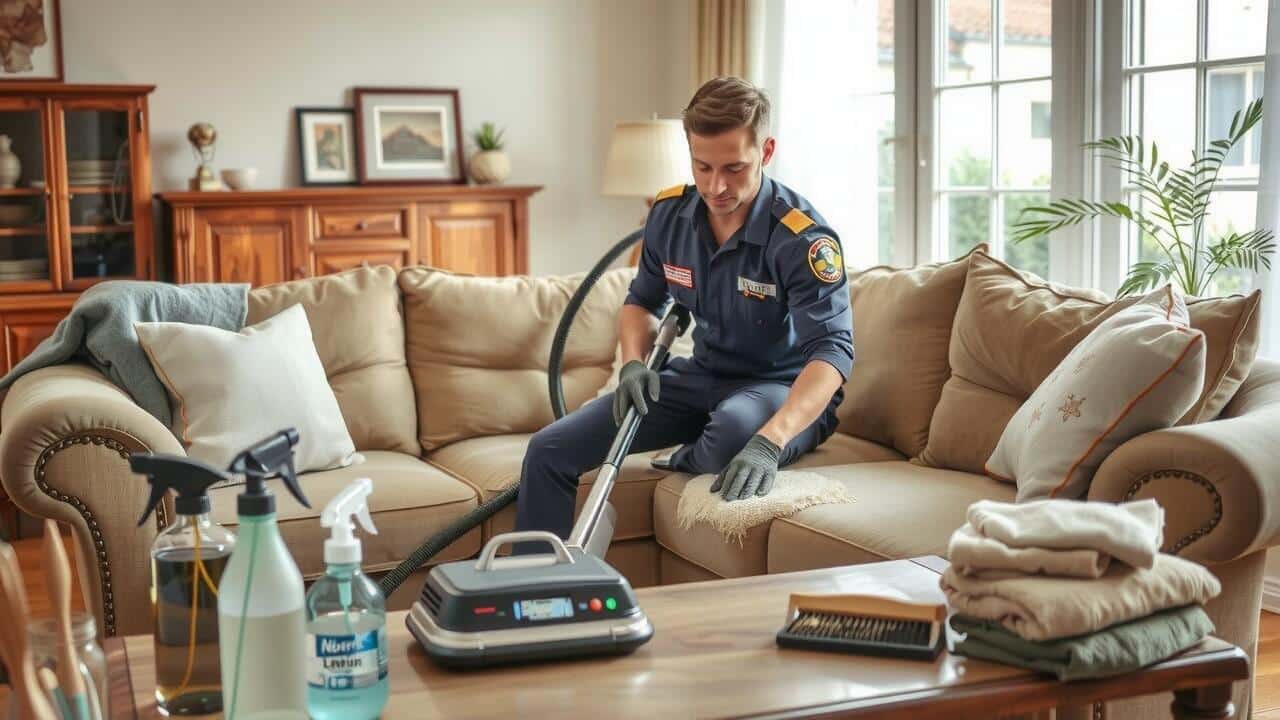
Deep Cleaning Upholstery
Deep cleaning upholstery is essential for maintaining its appearance and extending its lifespan. Regular vacuuming removes loose dirt and debris, but it is often not enough to tackle deeply embedded grime. Using a steam cleaner or an upholstery-specific cleaner can help lift stains and refresh the fabric. Make sure to pre-test any cleaning solution in an inconspicuous area to avoid damage or discoloration.
Before starting the cleaning process, remove any cushions or detachable covers. This allows for a thorough clean without missing any hidden sections. Follow the manufacturer’s care instructions closely to ensure that the cleaning method aligns with the upholstery’s fabric type. Combining professional upholstery cleaning with careful home maintenance can lead to a brighter and cleaner living space.
Best Practices for Deep Cleaning
Regular upholstery cleaning is essential to maintain the appearance and longevity of your furniture. Begin by vacuuming the fabric thoroughly to remove any loose dirt and debris. This step helps prevent particles from embedding deeper into the fibers during the cleaning process. Once you’ve vacuumed, check the manufacturer’s label for specific cleaning instructions and recommendations regarding water or cleaning solutions.
For deeper cleaning, consider using a fabric-safe upholstery cleaner or creating a homemade solution with gentle ingredients. Test the cleaner on a hidden area first to ensure it doesn’t cause discoloration or damage. Use a soft brush or cloth to apply the solution, working in small sections and avoiding oversaturation. Rinse the area with a damp cloth after cleaning to remove any residue and allow your upholstery to air dry completely for the best results.
Drying and Maintaining Upholstery
After completing the upholstery cleaning process, proper drying is essential to prevent mold and mildew growth. Use fans or open windows to promote airflow in the room. In humid conditions, a dehumidifier can help maintain lower moisture levels, accelerating the drying process. Allowing the upholstery to dry completely will also help preserve the fabric’s integrity and prevent any lingering odors.
Maintaining upholstery involves regular cleaning and protective measures. Vacuuming the fabric on a weekly basis removes dust and debris, thus prolonging its lifespan. Applying fabric protectants can create a barrier against stains. These methods not only retain the appearance of the upholstery but also reduce the frequency of deep cleaning needed.
Techniques for Effective Drying
Effective drying of upholstery is crucial to prevent mold and mildew growth. After cleaning, use a fan to improve airflow in the room. Positioning the fan to blow directly on the damp area can significantly speed up the drying process. In addition to fans, placing the upholstered furniture in a well-ventilated area can enhance evaporation. If humidity levels are high, using a dehumidifier may help reduce moisture in the environment, promoting faster drying.
Monitoring the drying process is essential for upholstery maintenance. Check the fabric periodically for moisture, as this can help identify any spots that may need additional airflow. Avoid using heat sources like hair dryers or radiators, as this can damage the fabric. Ensure that any cleaning products used in the upholstery cleaning process are fully absorbed and dried out before resuming normal use of the furniture. Taking these steps allows for effective drying and prolongs the life of the upholstery.
Preventing Future Stains
Taking proactive measures can significantly extend the life of your upholstery and reduce the effort needed for future upholstery cleaning. One effective strategy is to apply a fabric protector designed specifically for your type of upholstery. These products create a barrier that repels liquids and prevents stains from setting in. Regularly vacuuming the fabric helps to remove dust and debris that can wear down fibers over time, contributing to the deterioration of the upholstery.
In addition to protective treatments and consistent cleaning, immediately addressing spills can help minimize their impact. Blotting the area with a clean, dry cloth will absorb excess moisture and prevent it from penetrating the fabric. Keeping a stain removal kit on hand will allow you to tackle blemishes promptly, making your upholstery cleaning routine more manageable. Educating family members about avoiding common stains can also promote a cleaner living environment.
Tips for Upholstery Protection
To ensure the longevity of your upholstery, consider applying a protective spray designed for fabric. These sprays create a barrier against spills and stains while allowing the fabric to breathe. Regular application can significantly reduce the effects of daily wear and tear, helping maintain the original appearance of the upholstery. Be sure to test the spray on a small, inconspicuous area first to observe any potential color changes or damage.
Regular maintenance plays a crucial role in protecting upholstery from future stains. Incorporating vacuuming into your cleaning routine helps to remove dirt and debris that can cause fabric to wear down over time. For unexpected spills, addressing them immediately with a blotting technique can prevent stains from setting. Establishing a schedule for professional upholstery cleaning reinforces your protective measures and ensures that your furniture remains in excellent condition.
FAQS
What is the first step in cleaning upholstery fabric?
The first step is to vacuum the upholstery to remove loose dirt, dust, and debris. This prepares the fabric for deeper cleaning.
Can I use regular household cleaners on upholstery?
It’s best to avoid regular household cleaners unless they are specifically designed for upholstery. Check the care label on your fabric for recommended cleaning solutions.
How often should I clean my upholstery?
It is recommended to clean upholstery at least once a year, but high-traffic areas may require more frequent cleaning to maintain appearance and hygiene.
What is the best method for drying upholstery after cleaning?
The best method for drying upholstery is to allow it to air dry in a well-ventilated area. You can also use fans or a dehumidifier to speed up the drying process.
How can I prevent future stains on my upholstery?
To prevent future stains, consider applying a fabric protector, promptly addressing spills by blotting them, and regularly maintaining your upholstery through cleaning and care.

